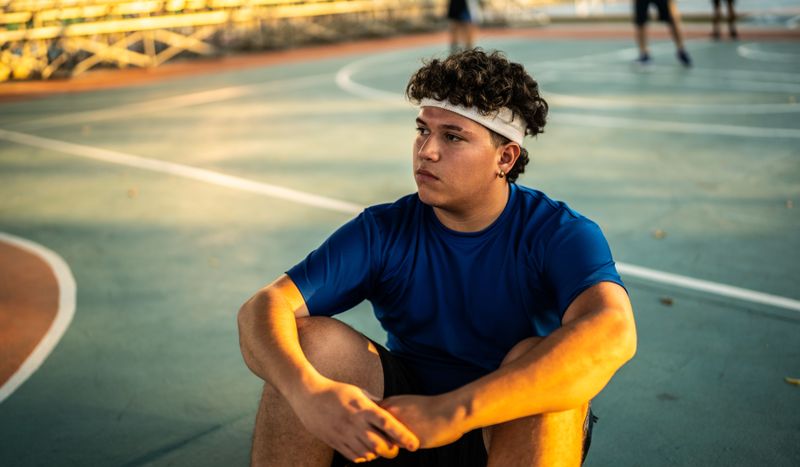7 Back-to-School Tips to Help Kids Feel More Prepared to Deal With Bullies

Back-to-school season should be filled with excitement and fresh possibilities—but for kids who’ve experienced bullying, it can feel more like a countdown to dread. The thought of facing the same hallways, the same tormentors, and the same silent fears can turn even the bravest child’s stomach. As a parent, you might feel helpless, unsure how to shield your child from cruelty without overstepping. But here’s the good news: you can make a powerful difference. With the right strategies, you can help your child walk into the new school year with confidence, strength, and the tools to stand tall—no matter what.
1. Create a Judgment-Free Zone at Home

Children need a safe harbor where they can share difficult experiences without fear. Set aside 15 minutes daily for uninterrupted conversation about their day. Ask specific questions like “What made you laugh today?” instead of generic “How was school?”
When your child opens up, resist the urge to immediately solve problems or dismiss concerns. Simply acknowledge their feelings with phrases like “That sounds really tough” or “I understand why you’d feel that way.”
This consistent practice builds trust and shows your child that home is a place where all emotions are welcome. Many kids keep bullying secret because they fear disappointing their parents or making things worse.
2. Validate Emotions While Building Resilience

Fear, anger, and sadness are normal responses to bullying. When your child expresses these emotions, avoid saying things like “just ignore it” or “toughen up.” Instead, try “I hear you’re feeling scared about going to math class. That makes complete sense.”
Help them identify their feelings using simple techniques like drawing emotions or rating anxiety on a 1-10 scale. This acknowledgment actually reduces the intensity of negative emotions and helps kids feel understood.
Once they feel heard, gently shift toward coping strategies. Ask “What helped you feel better last time?” or “What’s one small step that might make tomorrow easier?” This balance validates their experience while building problem-solving skills.
3. Boost Self-Esteem Through Meaningful Praise

Bullying chips away at a child’s self-worth, making them vulnerable to further harassment. Counter this damage by highlighting their unique strengths daily. Notice effort rather than outcomes: “You worked really hard on that science project” instead of focusing only on grades.
Create a “strength jar” where family members write down positive observations about each other. “I noticed how you helped that younger kid find their classroom” or “I admire how you stood up for your friend.”
Remind them that a bully’s words reflect the bully’s problems, not your child’s value. Children with strong self-esteem are less likely to become bullying targets and recover faster when incidents occur.
4. Practice Responses Through Realistic Role-Play

Surprise your child by saying “Let’s pretend I’m the kid who always makes fun of your lunch. What could you say?” Take turns playing different roles to build confidence in various scenarios. Keep responses simple: “That’s not cool” or “I don’t like that” followed by walking away.
Body language speaks volumes in bullying situations. Practice standing tall with shoulders back and maintaining eye contact. Even when scared inside, projecting confidence often discourages bullies from continuing.
Share age-appropriate stories about times you faced difficult people. Your vulnerability shows them everyone struggles sometimes. Focus on how you handled it rather than dwelling on the negative experience itself.
5. Partner With School Staff Proactively

Don’t wait for problems to escalate. Schedule a meeting with your child’s teacher or counselor before issues arise. Start with positive comments: “Alex has mentioned enjoying your science demonstrations” before sharing concerns.
Ask specific questions like “Where do students go during lunch if they need quiet time?” or “How does the school handle reported bullying?” This information helps you understand the school’s approach while alerting staff to watch for potential problems.
Create a communication plan together. Would weekly email check-ins work? Should your child have a designated “safe person” at school? Clear expectations between home and school create a safety net for your child.
6. Strengthen Friendship Circles Outside School

Healthy friendships provide powerful protection against bullying’s emotional impact. Find activities aligned with your child’s interests where they can connect with like-minded peers. A child who struggles socially at school might thrive in robotics club, theater group, or sports team.
Arrange casual get-togethers with potential friends by suggesting specific activities: “Would you like to invite Jaime over to build that rocket kit?” rather than vague playdates. Watch for friendship dynamics without hovering too closely.
Teach friendship skills explicitly when needed. Some children benefit from practicing conversation starters or learning how to join games in progress. Even one solid friendship can dramatically reduce bullying’s negative effects.
7. Recognize Warning Signs and Know When to Seek Help

Sudden changes in sleep patterns, frequent stomachaches, or avoiding school might signal ongoing bullying. Create a simple journal noting dates, behaviors, and your child’s comments to identify patterns. Physical marks, damaged belongings, or lost items deserve immediate attention.
Document incidents in writing when communicating with school officials. Include specific details: “On Tuesday, September 12, three boys prevented Alex from entering the cafeteria.” This creates an official record and demonstrates the seriousness of your concerns.
Don’t hesitate to seek professional support if your child shows persistent anxiety, depression, or talk of self-harm. School counselors, family therapists, and pediatricians can provide specialized help when bullying causes significant distress.

Comments
Loading…